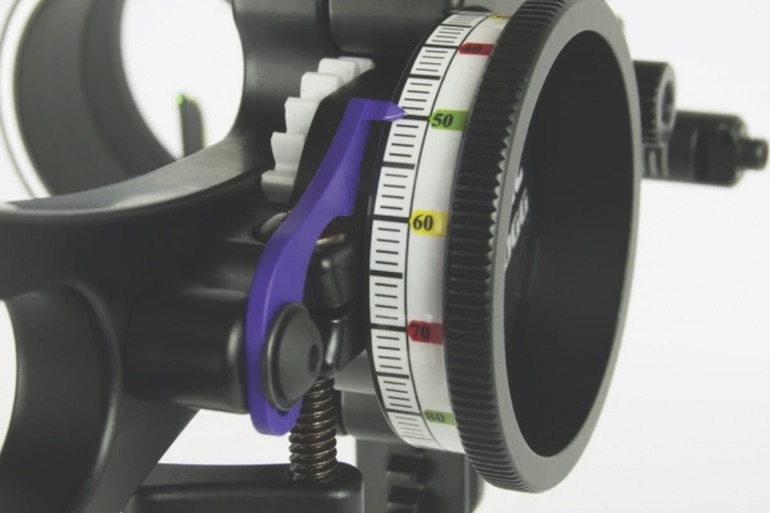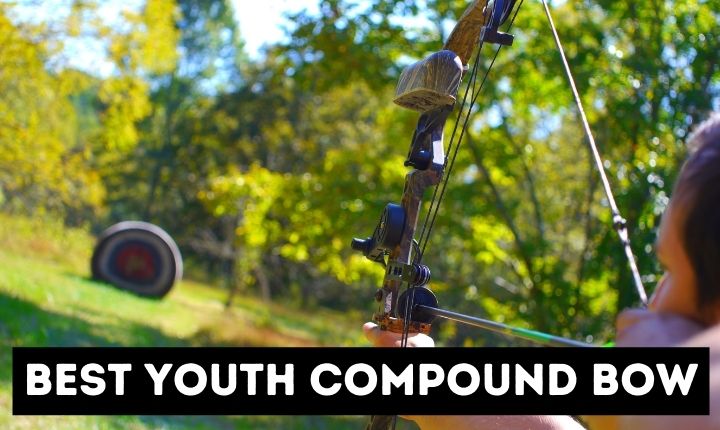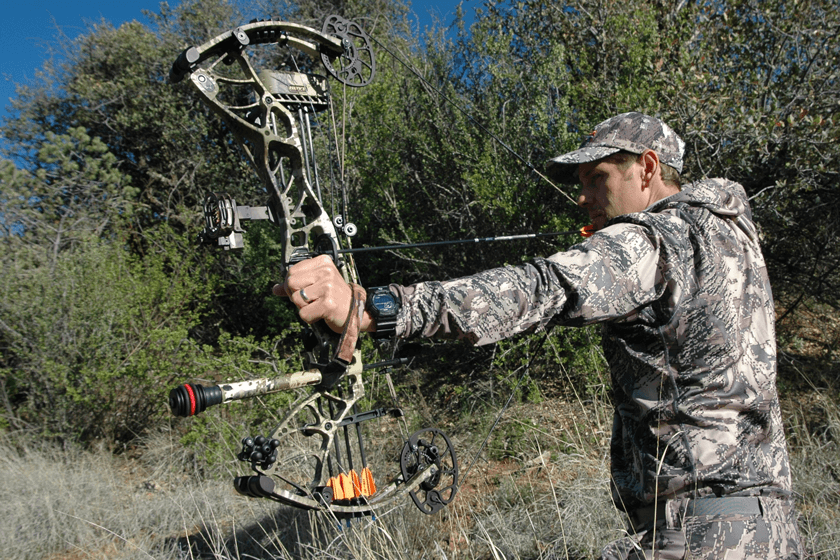Whether you are an experienced archer or a novice, mastering the use of a recurve bow sight can take your skills to the next level.
Not only does it provide greater accuracy and consistency, but it also helps to make the experience of shooting a bow more enjoyable.
However, if you have never used a recurve bow sight before, it can be a bit intimidating. That’s why we have put together this guide to help you understand how to use a recurve bow sight in simple steps.
Here is a brief step:
- Aim at the target center.
- Follow your arrows around the target.
- Adjust the sight housing in all directions.
- Top pin for close, bottom for far distances.
- Start sighting at 10 yards, usually 20 for most.
- Maintain consistent body alignment.
- Many sights have a circle or colored dot; YouTube tutorials can help.
From adjusting the sight pins to finding your anchor point, we’ve got you covered. So, let’s dive in and take your archery game to the next level!
How To Aim a Recurve Bow Sights?
When it comes to aiming a recurve bow, using a bow sight can be a game-changer.
Bow sights allow for precise and accurate shots, making them a valuable tool for archers of all levels. But how do you properly aim a recurve bow sight?
First, it’s important to understand that using a recurve bow sight is a matter of science and precision. When you draw the bowstring back, your eye naturally aligns with the sight pins on the bow sight.
These pins are calibrated to specific distances and angles, allowing you to aim your shot with incredible accuracy.
To properly aim a recurve bow sight, you need to focus on the target and align the sight pins with the spot where you want the arrow to hit.
This requires a steady hand, a relaxed grip, and a strong understanding of the trajectory of your arrow.
When using a recurve bow sight, it’s also important to consider factors like wind speed and direction, distance to the target, and the weight and balance of your bow.
By taking all of these variables into account, you can make small adjustments to your aim and hit your target with pinpoint accuracy.
Now, let’s get into the steps for using a recurve bow sight:
Step One – Prepare Your Sighting Pins
Before you start using your recurve bow sight, it’s essential to prepare your sighting pins correctly. These pins are the small markers on your sight that help you aim at different distances. To set them up:
Firstly, gather an Allan wrench, a simple tool that will allow you to make adjustments to your pins.
Secondly, ensure that all your sighting pins are initially set to the middle position. This means they are in the center of the sight housing. This initial setup provides you with the flexibility to make adjustments in any direction later on.
Setting up your sighting pins accurately is crucial because it forms the foundation for precise aiming. If your pins are not aligned correctly, you may struggle to hit your target consistently.
Read: How To Mount Recurve Bow Sight?
Step Two – Establish Your Target and Measure Distances
Now that your sighting pins are in the right starting position, it’s time to set up your target and measure the distances to ensure accurate shooting.
Start by placing your target on the ground at a location suitable for your practice. Ideally, you should choose a safe and open area where you can shoot without any obstructions.
Next, mark off specific distances from your shooting position to the target in increments of 10 yards. It’s a good practice to mark distances up to 40 yards, as this range allows for various shooting scenarios and challenges.
If you find it challenging to measure distances accurately, you can invest in a range finder, a handy device that uses technology to precisely determine the distance between you and the target.
Establishing your target and measuring distances accurately is essential for successful archery practice. It ensures that you have a clear reference for aiming and can adjust your sight pins accordingly for different target distances.

Step Three – Begin Sighting in Your Bow
With your sighting pins prepared and your target set up, it’s time to start the process of sighting in your recurve bow. This step involves adjusting your pins to align with specific distances accurately. Here’s how to do it:
Begin with your 20-yard pin, which is typically the first pin on your sight. Position yourself at a distance of around 10 yards from the target.
Ensure that your body is positioned squarely, facing the target, with your shoulders aligned at a 90-degree angle. Draw the bowstring back, nock an arrow, and prepare to take your first shot.
Now, look through the sight at the top pin (in this case, the 20-yard pin), and aim it at the target. Release the arrow and observe where it lands on the target.
Repeat this process multiple times, shooting arrows at the target while using the 20-yard pin as your reference. This practice helps you get comfortable with aiming and ensures that you consistently hit the target at this distance.
Sighting in your bow is a fundamental step in archery, and starting with the 20-yard pin provides a solid foundation for accurate shooting. Practicing at a shorter distance initially allows you to build confidence in your shooting abilities before moving on to longer distances.
Read: How To Install Finger Savers On A Recurve Bow?
Step Four – Set Your 30-Yard Pin
After you’ve gained confidence and accuracy at the 20-yard distance, it’s time to move on to setting your 30-yard pin. Follow these steps to do it right:
Transition to the 30-yard mark on your range or shooting area, ensuring that you have a clear view of your target.
Now, use your second pin, the 30-yard pin, and align it with the target. Maintain the same shooting form and technique as you did at the 20-yard distance.
Shoot several arrows while focusing on your 30-yard pin. Pay close attention to where your arrows land on the target. This step is crucial for establishing accuracy at this intermediate distance.
Take your time with this step; the 30-yard pin will become an anchor point for your shooting. It’s important to set it accurately because you won’t be adjusting it frequently. Consistency in your form and aiming is key.
Step Five – Refine Your 40-Yard Pin
As you progress through the steps, you’ll eventually reach the 40-yard distance. Here’s what you need to do:
Continue shooting arrows at the target, this time focusing on your 40-yard pin through the sight.
When making adjustments at this stage, remember that you’ll be moving the pin itself rather than the entire sight housing. Your goal is to fine-tune the 40-yard pin to ensure that your arrows consistently hit the center of the target at this distance.
This step is all about honing your accuracy at longer distances. It’s important to maintain a steady shooting form and concentrate on your aim, making small adjustments to the 40-yard pin as needed to improve your accuracy.

Step Six – Revisit Your 20-Yard Shot
After you’ve set your pins for the 30 and 40-yard distances, it’s a good practice to revisit your 20-yard shot:
Shoot arrows at the target from the 20-yard distance once again. This step helps ensure that your initial settings are still accurate and that your 20-yard pin remains aligned with the target.
If you notice any discrepancies in your 20-yard shots, make minor adjustments by moving the pin, not the entire sight housing. This fine-tuning ensures that all your sighting pins are precisely calibrated for their respective distances.
Is it Good To Maintain to Set 30-yard Pin?
Maintaining a 30-yard pin while bowhunting can be a good idea for several reasons. First, it can help you develop consistent and accurate shots at that distance.
Second, it can serve as a reference point for other distances, allowing you to adjust your aim accordingly.
However, it’s important to remember that every archer is different, and what works for one person may not work for another.
Ultimately, the best approach is to experiment and find what works best for your individual needs and abilities.
Can You Sight in a Recurve Bow?
You can indeed use a sight on a recurve bow, a practice that has been around since before the compound bow’s invention. This applies to all types of bows and can be particularly helpful for beginners.
Sights for recurve bows can vary in complexity, ranging from simple setups involving foam tape and straight pins to more advanced sight systems.
To install and align a recurve sight, follow these steps:
- Align the string with the arrow, ensuring they are in a straight line.
- Position the sight so that it roughly lines up with the bowstring.
If your shooting plans mainly involve close-range targets, most types of sights, including those designed for compound bows, can be suitable for use with a recurve bow.
Read More: How To Store A Recurve Bow?

Why do archers keep both eyes open?
Archers choose to keep both eyes open for several practical reasons. Firstly, it provides them with a better sight picture, allowing them to aim more accurately at their target.
Secondly, having both eyes open enhances depth perception, which is crucial for gauging distances effectively.
Additionally, maintaining both eyes open provides improved peripheral vision, helping archers remain aware of their surroundings and potential obstacles.
Keeping both eyes open also contributes to improved balance during the shot, as it allows the archer to maintain a broader field of vision.
Furthermore, it reduces strain on the eyes, promoting a more relaxed shooting experience.
With both eyes open, archers can better judge the range to their target, enhancing their overall shooting precision.
On the contrary, closing one eye while shooting can lead to a contorted facial expression, resulting in unnecessary muscular tiredness.
It also reduces the likelihood of achieving a consistent and repetitive anchoring position, which is crucial for accurate shooting.
To keep both eyes open and block out the view from one eye, archers often use an eye patch or a blinder.
These tools help ensure that they can fully capitalize on the benefits of binocular vision while maintaining focus and precision during their shots.
Must Do Before You Sight In Your Recurve Bow?
Before you sight in your recurve bow, there are a few things you should do to ensure that the process goes smoothly. These include:
- Make sure your bow is properly set up and tuned. This includes ensuring that the strings are properly stretched and that the limbs are aligned properly.
- Check your arrows to make sure they are straight and undamaged. If they are bent or damaged, they may not fly true and could affect your aim.
- Choose a suitable range to sight in your bow. This should be a range where you feel comfortable and can shoot accurately.
- Gather any tools or equipment you may need, such as a bow square, a sight level, and sight tape.
- Make sure you have a clear and unobstructed view of the target.
- Warm up your muscles and stretch before shooting to ensure that you are physically prepared.
By following these steps, you can ensure that you are properly prepared to sight in your recurve bow and that the process goes smoothly.
Conclusion
In conclusion, using a recurve bow sight can greatly improve your accuracy and confidence as an archer.
By following these steps and practicing regularly, you can learn how to use your sight effectively and maintain it properly.
Don’t forget to adjust the sight for different lighting conditions and practice shooting in different positions to further improve your aim.
With practice and dedication, you’ll be well on your way to becoming a more skilled and accurate archer.

General Manager & Auditorial Head.
Killian Jake is a World Sports Traveler and hobbyist sports lover. By exploring different sorts of playing modules like indoor, outdoor, and many more. As for professionalism and writing, it’s helpful to give you the right suggestions on different games and sports.

![How To Use Recurve Bow Sights [ Easy Steps ]](https://sportsue.com/wp-content/uploads/2023/05/How-To-Use-Recurve-Bow-Sights-Easy-Steps-2.jpg)



